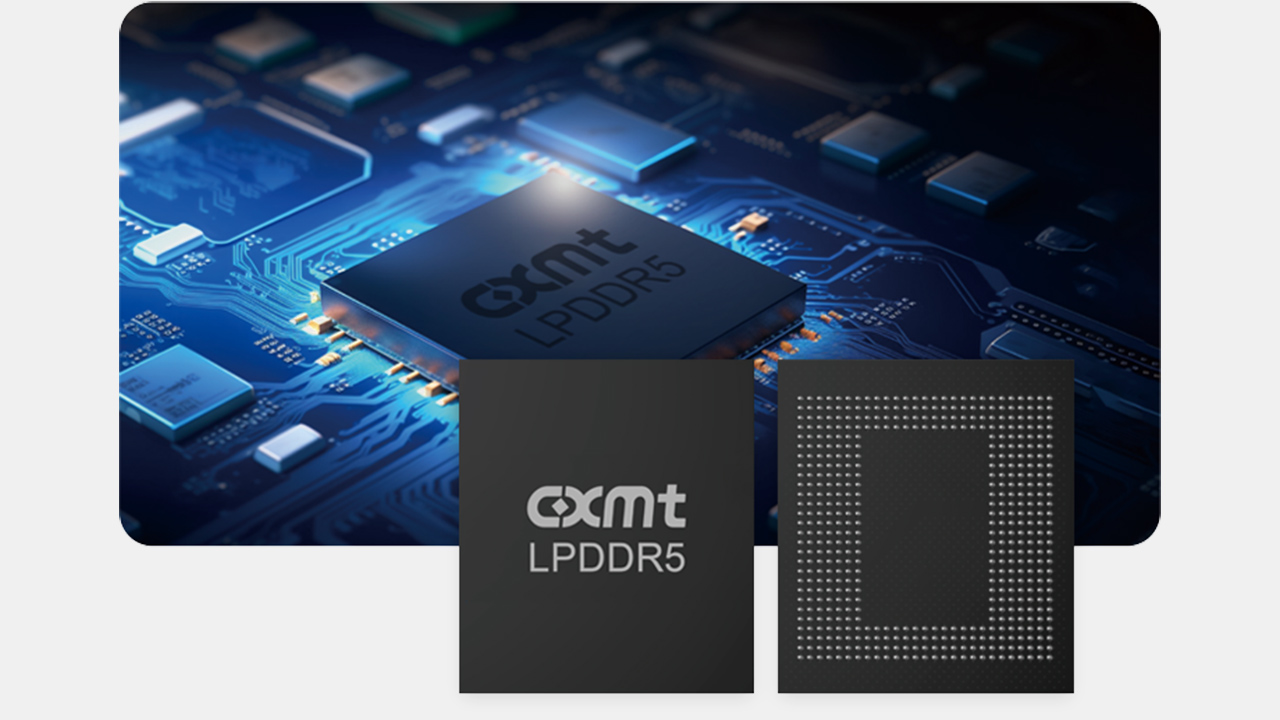
Chinese memory maker ChangXin Memory Technologies has introduced its first LPDDR5 memory devices and two new products using the tech. The new DRAMs are the first LPDDR5 memory ICs produced by a Chinese company. They are aimed at inexpensive smartphones and other low-power devices, a key advance as the country looks to expand its chipmaking capabilities.
CXMT is mass-producing 12Gb LPDDR5 memory devices rated for a 6400 MT/s data transfer rate with on-die ECC, which is in line with the performance and features of standard LPDDR5 DRAMs made by bigger players, such as Micron, Samsung, and SK Hynix. The company currently offers smartphone makers a 6 GB LPDDR5 DSC package and a 12 GB LPDDR5 package-on-package memory option.
CXMT is the first company from China to start the mass production of LPDD5 memory. The company does not have leading-edge process technologies like bigger rivals, so CXMT has to stick to moderately-sized 12Gb LPDDR5 devices. For the same reason, the company does not produce premium LPDDR5X ICs. The DRAM maker is mass-producing LPDDR5-6400 and can compete for high-volume entry-level and midrange smartphones, which is a breakthrough for the company as previously it could only produce LPDDR4 and LPDDD4X for low-end handsets.
So far, Xiapmi and Transsion have already validated the LPDDR5-6400 memory from CXMT. According to IDC, Xiaomi is the world's third-largest smartphone supplier, shipping 41.5 million handsets and commanding a 13.7% market share in Q3 2023. Also, Xiaomi produces a boatload of other devices that use LPDDR.
Transsion Holdings may not be a household name for those who live in Europe or the U.S.. Still, its brands like Tecno, Itel, and Infinix have gained considerable popularity in various regions, particularly in Africa and other emerging markets. In Q3, the company shipped 26 million smartphones and commanded an 8.6% share globally.
With two partners that command over 22% of smartphone shipments by volume, CXMT is well set to supply all of its LPDDR products, including LPDDR5-6400, domestically. In fact, demands from Xiami and Transsion likely exceed CXMT's ability to supply, so the question is whether the company can expand its production capacities.
Xiaomi already uses 3D NAND flash from China-based YMTC, so it's logical for them to adopt CXMT's DRAMs.
!["[T]he First and Fifth Amendments Require ICE to Provide Information About the Whereabouts of a Detained Person"](https://images.inkl.com/s3/publisher/cover/212/reason-cover.png?w=600)






